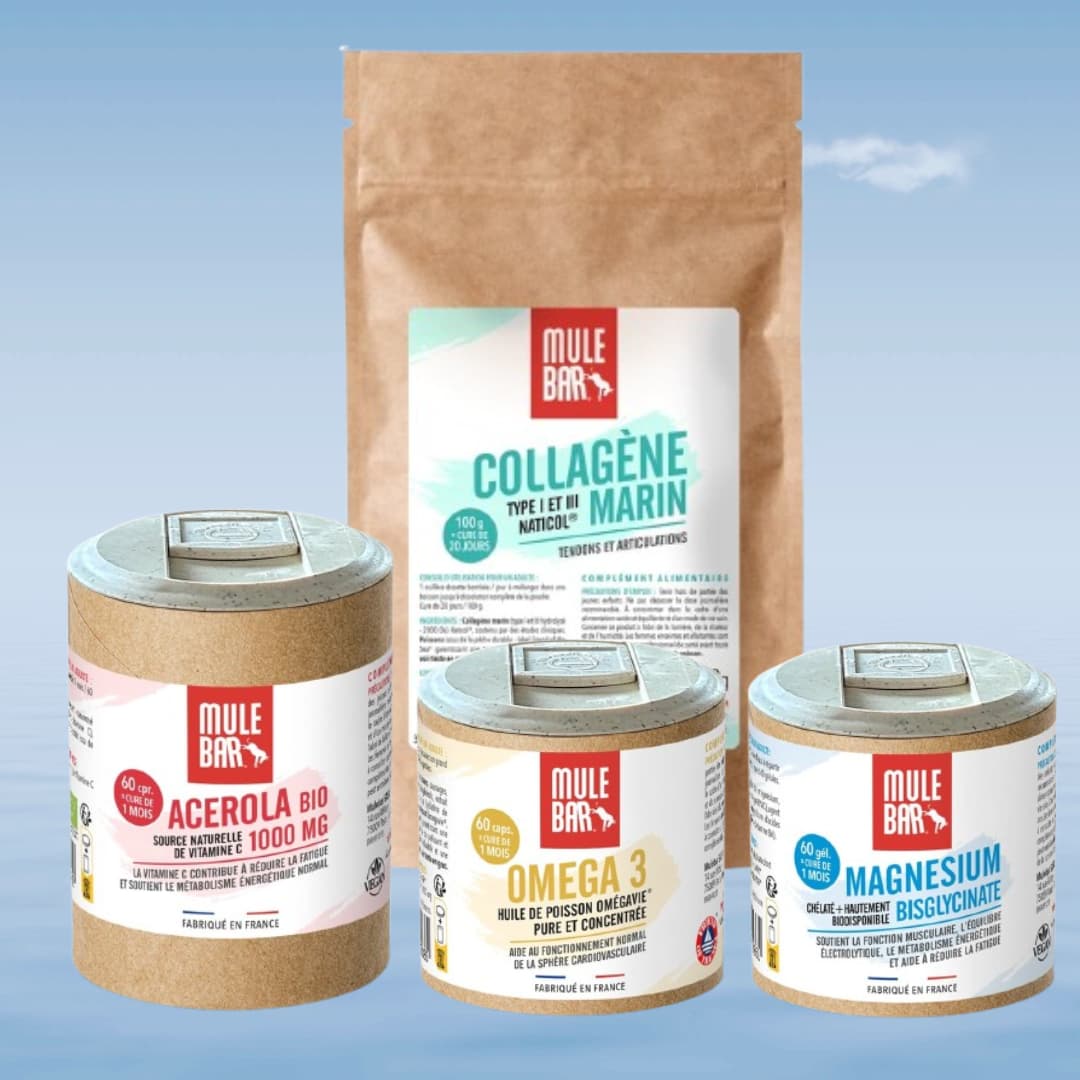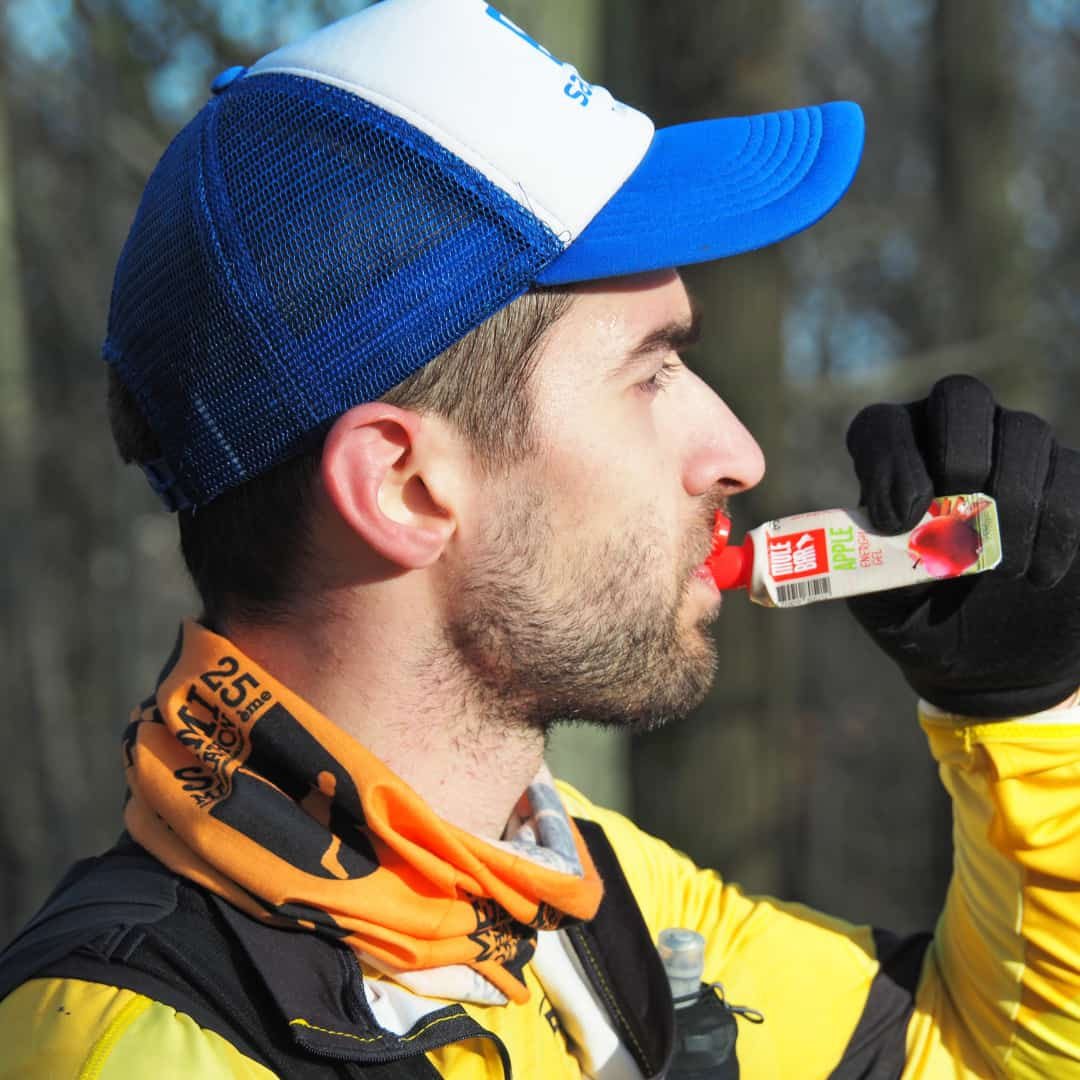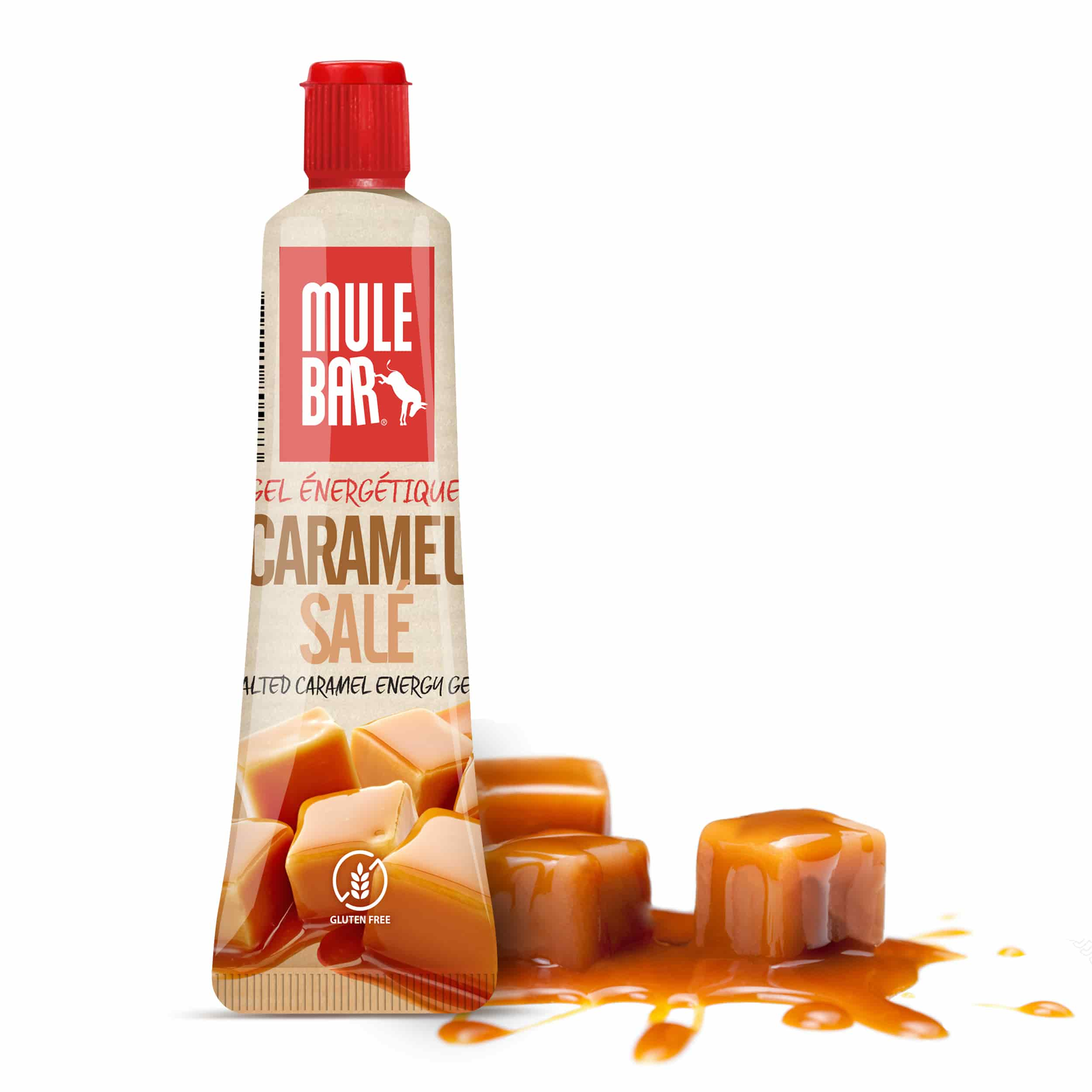You've probably already seen those tubes or small, flexible sachets between the fingers of a marathon runner, cyclist, or trail runner. These energy gels, discreet in appearance, are nonetheless true performance allies. They allow athletes to ward off fatigue, maintain their pace, and cross the finish line without collapsing. But what are they really made of? How do they work on our bodies? And why do some people talk about the "2:1 ratio" as a nutritional revolution? If you practice an endurance sport like running, cycling, triathlon or trail running, this article is for you. We'll delve into the physiology, science, and field experience to understand how a simple energy gel can improve your performance and transform your race.
Why does the body need carbohydrates during exercise?
Before we talk about gels, let's talk about fuel. The human body is a fascinatingly efficient machine. But like any machine, it needs energy, and its primary fuel is glucose.
Glycogen: your internal battery
The glucose we consume through food is stored as glycogen in our muscles (approximately 400 to 500g) and in our liver (approximately 100g).
It's an internal reserve of approximately 2,000 kcal, which our body draws upon from the very first minutes of sustained effort. But here's the problem: this reserve isn't infinite. After 1.5 to 2 hours of exertion, the reservoir is empty… and that's the infamous "marathon wall" or the bonk on a bike: heavy legs, dizziness, a feeling of emptiness… in short, a difficult end to the race, or even a cause of DNF (Did Not Finish).
The body then tries to compensate by burning more fat, but this process is slower and less efficient at sustaining a high pace unless specifically prepared for it.
This is where energy gels come in: they recharge the battery while you're on the go.
Carbohydrate requirements during exercise: the golden rule of 30, 60 and 90g/hour
The research conducted by Asker Jeukendrup (University of Birmingham) and the recommendations of the International Society of Sports Nutrition (ISSN) are clear:
- For efforts lasting less than an hour: no need for additional carbohydrates;
- Between 1 and 2 hours: 30 to 60g of carbohydrates per hour is enough
- Beyond 2 hours: up to 90g/h, if the digestive system is well trained.
These figures aren't arbitrary: they correspond to the maximum intestinal absorption capacity. And to reach 90g/h without discomfort, you need to mix two types of sugars, glucose and fructose, hence the famous 2:1 ratio, which we'll discuss later.
On average, a gel contains about 25 to 30g of carbohydrates, so 2 to 3 gels per hour, depending on the duration and intensity of your effort, will be sufficient.
Why consume an energy gel rather than a bar?
Imagine you're halfway through a marathon. Your watch reads 21km, your breathing is steady, but your legs are starting to feel heavy. You can feel that your body isn't running smoothly. That's a sign that Your glycogen stores are decreasing. A well-chosen gel, taken at the right time, will allow you to restart the process.
A quick energy boost
Energy gel is a semi-liquid solution concentrated in simple and complex carbohydrates. Unlike an energy bar, it doesn't need to be chewed and is digested very quickly. Its absorption begins within minutes, for an almost instant effect on blood sugar levels.
Most gels contain:
- Glucose or maltodextrin (fast-release carbohydrate),
- Fructose (a slow-release carbohydrate),
- Electrolytes (sodium, potassium, magnesium),
- Sometimes caffeine or antioxidants.
This format is designed to be easy to carry, easy to digest and effective in the heat of the action.
Delay fatigue, preserve mental strength
The benefits aren't just physical. Carbohydrates also nourish the brain: they improve concentration, motivation, and pain management. Studies have shown that simply rinsing the mouth with a sugary solution activates areas of the brain linked to performance.
This shows how strong a signal glucose is for your body: “You can continue, you have fuel.”
The 2:1 glucose/fructose ratio: the winning formula
This is probably the biggest development in sports nutrition in the last .decade.
For a long time, only glucose or maltodextrin was used. The problem is that the intestine can only absorb 60g of glucose per hour, via a specific transporter called SGLT1. Beyond this amount, the sugar stagnates in the intestine and causes bloating, stomach aches, and even cramps.
But researchers have discovered that fructose uses another transporter called GLUT5. By combining glucose (or maltodextrin) and fructose in a 2:1 ratio, absorption can be increased to 90g/h (or even more for elite or highly trained athletes), while reducing digestive discomfort.
This is the key to modern endurance performance.
The advantages of the 2:1 ratio
- More energy absorbed per hour: up to 50% more than a 100% glucose gel.
- Less digestive stress: better tolerance during long efforts.
- More consistent energy: fewer “peaks” and “falls” in blood sugar.
- Better hydration: lower osmolarity, therefore better assimilation.
A 37g Mulebar energy gel contains 16g of glucose (rice syrup) and 8g of fructose (agave syrup). Taken every 30 to 40 minutes with water, it helps maintain a steady energy flow without overloading the digestive system. In a marathon, this is equivalent to 5 or 6 well-spaced gels. In an ultramarathon, alternate with fruit compotes or energy bars to vary the textures.

How to properly use an energy gel?
An energy gel is not a “magic energy boost”. It is part of a comprehensive nutritional strategy.
Test it in training
It's a golden rule: "Never test a gel for the first time on race day." Every athlete has a different digestive tolerance. Train your stomach like you train your legs. Test several flavors, several brands, several dosages.
The perfect timing
- First frost: between 30 and 45 minutes after departure.
- Then apply a gel every 30 to 40 minutes, if possible in several doses.
- Always take 1 to 2 sips of water after each dose
Never take a gel alone, without water, especially when it is hot: the concentration of sugars can slow down gastric emptying.
Splitting consumption
Rather than swallowing an entire gel at once, try consuming it gradually, in 2 or 3 doses spaced 10–15 minutes apart. This allows:
- More regular absorption
- Less risk of reactive hypoglycemia,
- Improved digestive comfort.
That is why Mulebar gels are offered either in truly resealable (and reusable) tubes or in eco-refills of 12 gels to be consumed using 60ml or 150ml silicone vials .
![]()
Adjust the frequency:
| Type of effort | Recommended frequency | Objective |
|---|---|---|
| 10 km intense | 1 gel around the 30th minute | Blood glucose maintenance |
| Half marathon | 1 gel every 7 to 8 km | Avoid the “wall” |
| Marathon | 5 to 6 gels | 60–90g of carbohydrates/h |
| Ultra-trail | 2 gels + 1 compote/hour | Energy + slow digestion |
Caffeine or antioxidants: there's a gel for every need
Not all gels are created equal. Their composition influences the type of energy provided, but also your mental and physical experience.
Caffeinated gels: for mental and energy recovery
Caffeine acts as a true "fatigue booster." It stimulates the central nervous system, improves concentration, and reduces the perceived exertion. It is recommended for the end of a race, periods of low energy, and critical sections of a trail run or mountain pass on a bike. However, be careful not to overuse it (maximum 2 to 3 caffeine gels per race) and test them before competition if you are sensitive to caffeine.
Antioxidant gels: protect and recover
During prolonged exertion, the body produces a large number of free radicals, which are responsible for oxidative stress and micro-inflammation of the muscles. Antioxidant gels provide nutrients such as vitamin C, zinc, selenium, or fruit extracts rich in polyphenols. The result? Better recovery, less post-race muscle soreness, and a better-preserved immune system.
Neutral gels: simplicity and tolerance
Some athletes prefer to avoid caffeine or strong flavors. "Neutral" gels offer stable energy and maximum tolerance without the possibility of nausea.
The most frequent mistakes:
- Testing a new gel on race day: risk of digestive problems, nausea, discomfort.
- Forgetting to drink: excessively high osmotic concentration, slowed digestion.
- Take a gel before the start: insulin spike, then a crash in the first few kilometers.
- Consuming too much of it: the intestine can only absorb a limited amount of sugars per hour.
Natural energy gels: a new generation
For a long time, gels were associated with a "chemical" image: artificial taste, sticky texture, difficult digestion. Fortunately, a new generation has arrived. Brands like Mulebar have redesigned the formula: 100% natural ingredients, sugars from fruits and cereals rather than refined, soft textures, even in cold weather, natural flavors to bring pleasure during exercise.
The result: gels that not only provide energy, but also respect your body and performance. Gels that are non-sticky, easily digestible, and therefore integrate perfectly into your nutritional strategy.
In conclusion: the fuel for your endurance
Energy gel, when used correctly, is much more than just a sugar concentrate.
It is a smart energy source, calibrated to support your muscles, mind and digestion during exertion.
The key is strategy: the right ratio (2:1), the right timing and good digestive tolerance.
Whether you're training for your first marathon or a 100km ultra-trail, remember: energy isn't something you can just wing, it's something you plan for. And if it can be natural, vegan, and delicious, all the better. Because a well-nourished body is a body that goes the distance.
FAQ — Frequently Asked Questions
When should I take an energy gel? Between 30 and 45 minutes after the start of the effort, then every 30 to 40 minutes.
How many gels during a marathon? Approximately 5 to 6, depending on your speed and digestive tolerance.
Can you take a gel without drinking anything? No. It should always be consumed with a few sips of water.
What is the difference between a gel and an energy drink? The gel provides concentrated energy; the drink hydrates and replenishes electrolytes.
Does energy gel cause weight gain? No, it simply replaces the energy expended during exertion.
Why do some contain caffeine? To stimulate the nervous system and improve concentration over long distances or night races.






Leave a comment
This site is protected by hCaptcha and the hCaptcha Privacy Policy and Terms of Service apply.